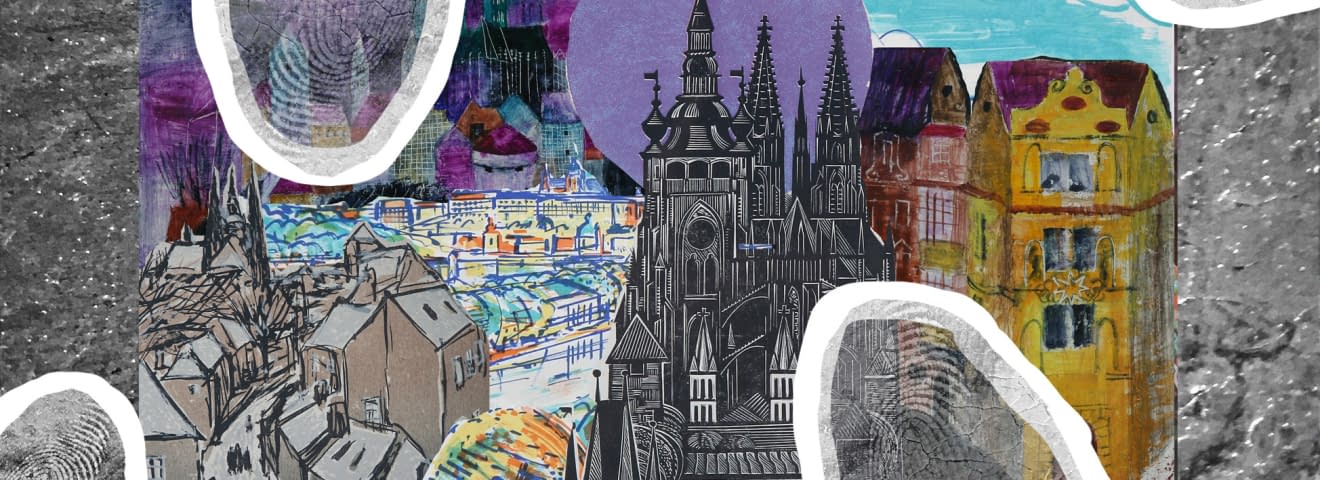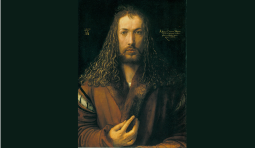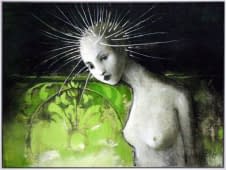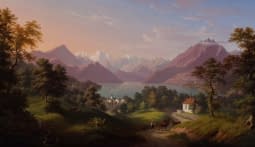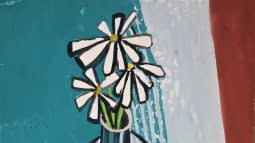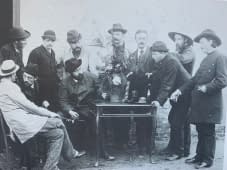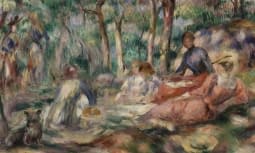Following the Traces of #PRAGUE - The Role of the "Golden City" Prague in Art History and Culture
Prague and its Cultural Appeal
Once an imperial seat, then one of the oldest university towns in Europe (founded in 1348), in the 14th century a cultural centre of the ‘Bohemian School of Painting’, in the 16th century an important centre for the promotion and collection of art with the unique ‘Kunstkammer Kaiser Rudolf II. ‘ a unique testimony to aristocratic patronage, and a constant centre of attraction for great cultural personalities (including J. W. von Goethe, Heinrich von Kleist, Clemens von Brentano and Beethoven), Prague advanced to become one of the most important cities of art and culture.
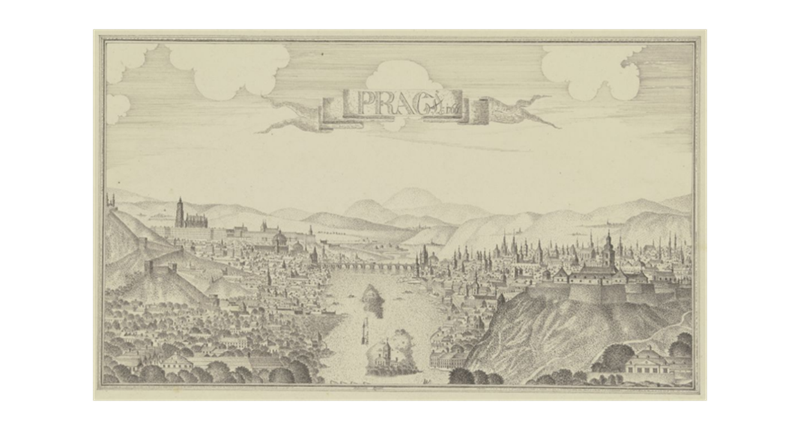
Over the course of many centuries, Prague's cultural significance has been successively reinforced with important and outstanding collections, museums and galleries: with the National Gallery Prague since 1796 (collection of old masters, collection of modern art, art collection after 1945, collection of prints and drawings, collection of Asian art), which is the second oldest European gallery after the Louvre in Paris; with the Gallery of the Capital City of Prague (1881), the Kampa Museum (2003) or the Centre of Contemporary Art (DOX, 2008). At the same time, educational institutions were established that continue to attract students from abroad, such as the Academy of Fine Arts, which was founded in 1799 and became an art academy in 1926, or the Academy of Art, Architecture and Design in Prague (UMPRUM), founded in 1885.
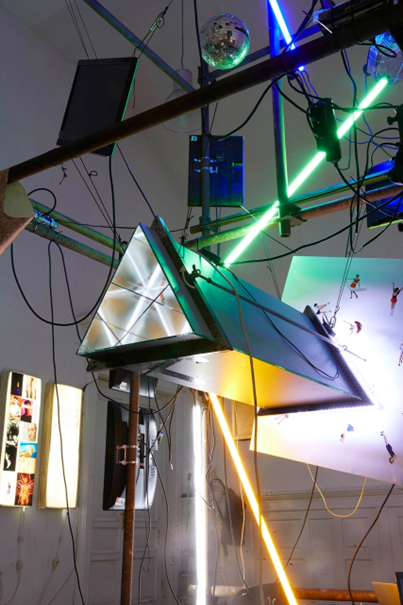
The Prague-Paris Axis: The Influence of European Metropolises on Czech Art of the 19th and 20th Centuries
It was the major European academies in Munich, Düsseldorf, Dresden and Paris that attracted young artists in the 19th century. In contrast, young Bohemian-Czech artists were committed to an art that had to deal with their homeland, identity and other Slavic countries. The founding of the ‘Society of Patriotic Friends of Art’ in 1796 was intended to strengthen Bohemian art and thus national identity. However, from the mid-19th century onwards, the increasing appeal of the cosmopolitan flair of Paris (see art24-Blog-Paris) and its art in galleries and collections was an unbroken role model for many Czech artists and representatives of the Avant-garde travelling to Paris, through which they hoped to gain inspiration, participate in exhibitions (Václav Sochor, 1855-1935, for example) and gain recognition from art critics. The stream of artists travelling to Paris on this Prague-Paris axis continued unabated, although only a few Czech artists achieved a major breakthrough with individual statements: among them, for example, the history painter Václav Brožík (1851-1901), who was highly revered in both cities, or Alfons Mucha (1860-1939), one of the most popular poster artists of Art Nouveau, who even made his breakthrough in Paris with the revolutionary “Gismonda”.
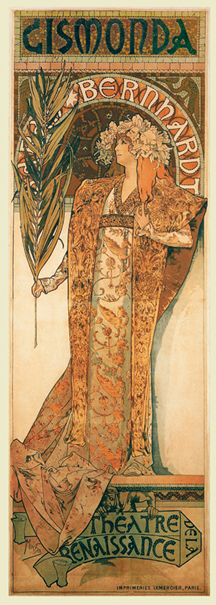
František Kupka (1871-1957), a pioneer of abstract art and an important representative of Cubism, as well as Toyen (1902-1980), who, under her real name Marie Čermínová, shaped the Surrealist art scene in Paris and Prague with impressive works. It should only be mentioned in passing that by 1910 Prague, which had by then become a major European city, already had a significant collection of Cubist works (including works by Picasso and Czech artists), which the art historian Vincenc Kramář had assembled as one of the first collectors of Cubist works by Picasso, and that in 1912 the “Group of Visual Artists” organized an avant-garde exhibition in Prague. The painter and graphic artist Toyen is a good example of the strong cultural axis between Prague and Paris: as a networker with close contacts to French artist colleagues (she lived in Paris from 1925 to 1929, then there for good from 1947 due to the Communist Party's rise to power in Czechoslovakia), she strongly influenced the Czechoslovak art scene in the period between the two world wars in the development of Cubism, Poetism, Surrealism and Artificialism (painting and poetry are to be seen as a unit). She was the only female co-founder of the Surrealist Group in Prague in 1934 - a strong grouping that remained vital as a movement until the end of the 1960s.
Prague as a Home in Exile: Artistic Creation and Cultural Exchange in the Shadow of National Socialism
‘I loved being in Prague. As once before after the thirty years of devastating religious wars, Prague had once again become a cosmopolitan centre where Europe met for the last time,’ wrote the painter Oskar Kokoschka about his time in exile in Prague from 1934 to 1938 in his autobiography My Life. While it was no longer possible for so-called ostracised artists to exist in Germany, between 1933 and 1939 they were able to continue working in the Czechoslovakian capital, which acted as their home in exile - especially as they were not subject to a professional ban as foreigners and encountered a Czech, Jewish and German cultural milieu that had existed side by side for centuries. Kokoschka, whose grandfather Václav Kokosska came from Prague, created around 30 oil paintings here during his exile with good contacts to the local art and cultural scene and as the founder of a group of graphic artists and the Oskar Kokoschka Association - including 16 views of Prague.
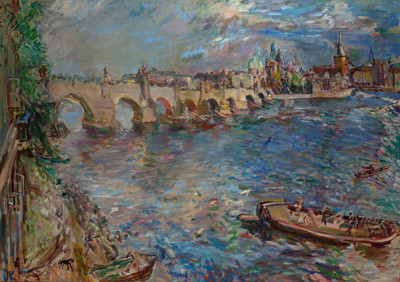
The increasingly threatening situation emanating from National Socialist Germany, which led to the violent occupation of Czechoslovakia in 1938, caused many Czech artists to emigrate to Paris at the end of the 1930s. Among them were many, such as Fedor Löwenstein, František Matoušek, Josef Šíma, Vítězslava Kaprálová and Bohuslav Martinů, who had not previously been interested in politics and now saw art as a means of actively drawing attention to the catastrophic situation in their home country through propaganda campaigns.
In 1948, the communists came to power: the West, and therefore also Paris, seemed inaccessible behind the ‘Iron Curtain’, which isolated Czech artists and restricted their freedom. The change only came decades later: with the opening of the borders in 1989, triggered by the ‘Velvet Revolution’, democracy was established and the independent state of the Czech Republic was founded - but Toyen (derived from the French citoyen = citizen), who rejected any form of totalitarianism as a threat to artistic freedoms, did not live to see any of this: she died as one of the most important Czech avant-garde artists in Paris in 1980.
Prague's Picturesque Beauty: Artistic Interpretations of the ‘Golden City’
The charming, romantic city of artists, writers and musicians harbours dreamlike squares, panoramas, views, corners and alleyways that have immortalised Prague's ‘golden sides’ in countless works.
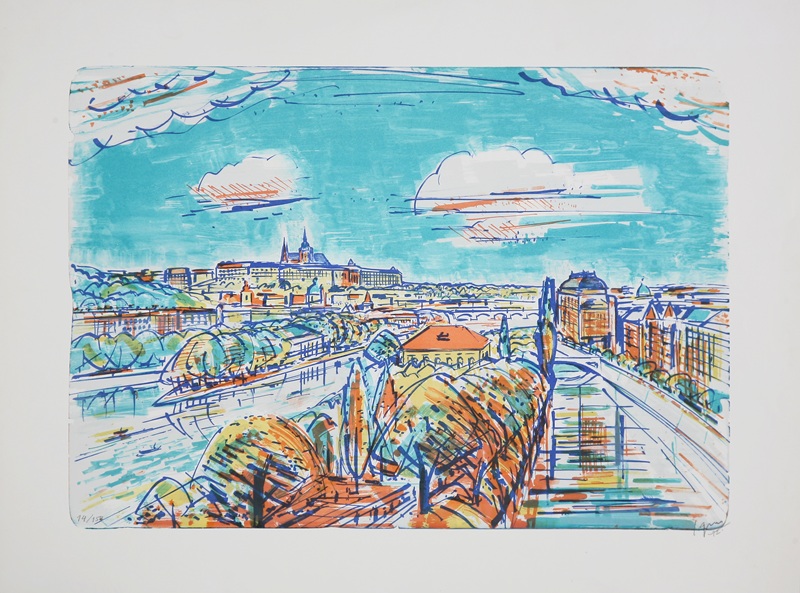
Jaroslav Grus presents an almost tourist showcase view: his panorama leads the eye across the Vltava to Hradčany Castle Hill, which stands out strikingly against the turquoise-blue sky and is framed on the right-hand edge of the picture by a row of buildings with the towering National Theatre. Grus (1891-1983) devoted himself to landscape painting from an early age and trained at the Academy of Fine Arts in Prague. Awarded several prizes and an active member of numerous artists' groups, Grus had a profound influence on the Czech art scene after 1945 and is now considered an important representative of modern 20th century landscape painting.
.jpg)
Trained at the Academy of Fine Arts in Prague, František Emler (1912-1992) received a one-year scholarship to Italy after graduating in 1938. Multiple awards, international exhibitions and further studies at the École nationale supérieure des Beaux-Arts in Paris made him a recognised and successful artist whose works can be found today in the National Gallery and Prague City Gallery, among others. Emler focusses on a loosely executed, enchanting winter scene of Prague's Old Town with walkers below St. Vitus Cathedral, whose striking silhouette rises up into the milky winter sky.
.jpg)
The artist Dana Hlobilová, born in 1928 and raised in a family of artists and industrialists, had an extraordinary career: after studying (1946-1951) at the VŠUP (College of Art, Architecture and Design) in Praze, Dana Hlobilová began studying in the textile design studio in 1948. In 1958, the world-famous Brussels Fountain (in the shape of a tree with mouth-blown glass bowls, originally made in the Kavalier glassworks) was created according to Dana Hlobilová's designs for the Expo in Brussels, for which she was awarded an honorary diploma. Initially working more as a graphic artist and designer, she is now primarily a draughtswoman and painter of mysteriously poetic gardens, landscapes and enchanting cityscapes executed in a lush color palette. Through study trips to Egypt, Syria, Lebanon, the former GDR, USSR and Yugoslavia as well as Poland, Belgium, France and Italy, she repeatedly found her themes and motifs. Even at the advanced age of almost 80, Dana Hlobilová still exhibits her works, for example in 2007 in the gallery of Nebílov Castle in the Czech Republic. In this work, Prague Castle in the historic district of Hradcany is enchanted into a fairytale setting. Dana decorates the stone façades with fine incisions in the paint and gives the mighty building its outline. In the dark purple and blue night sky stands the brightly illuminated round moon, which envelops the picturesque scene in a mystical backdrop and pays homage to Prague as a wonderful city.
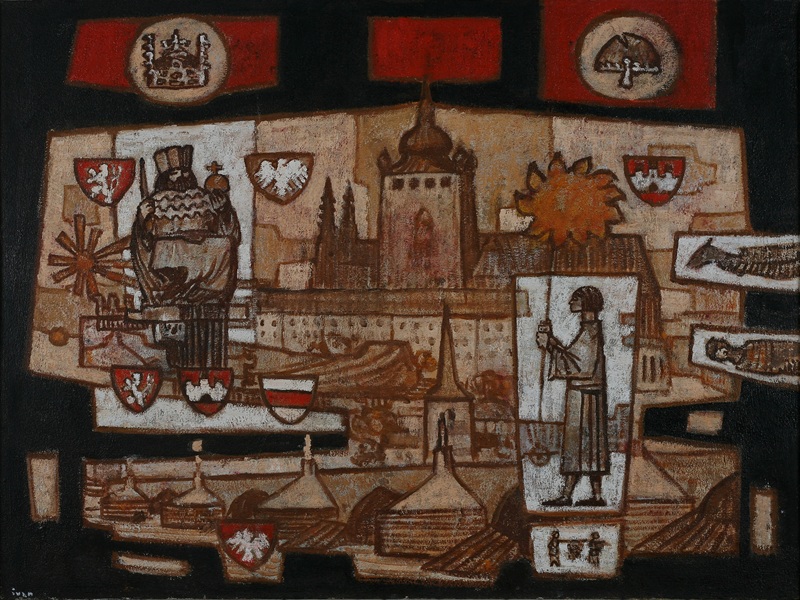
In an abstract, stylised form, Ivan (Ivo) Sedliský (1926-1996 or 1999) presents a view of Prague including its historical development into an important metropolis and great power - symbolised by coats of arms, Bohemian flags, the Bohemian king with crown, sceptre and orb, in the construction of important buildings such as Charles University, Charles Bridge (lower edge of the picture), the city wall, Prague Castle with St Vitus Cathedral on Hradcany Hill (top centre) as well as other churches and royal buildings. The artist, who trained at the Academy of Fine Arts in Prague and later worked there as an assistant, exhibited in various European countries - successfully combining his personal painting style with specific colour combinations.
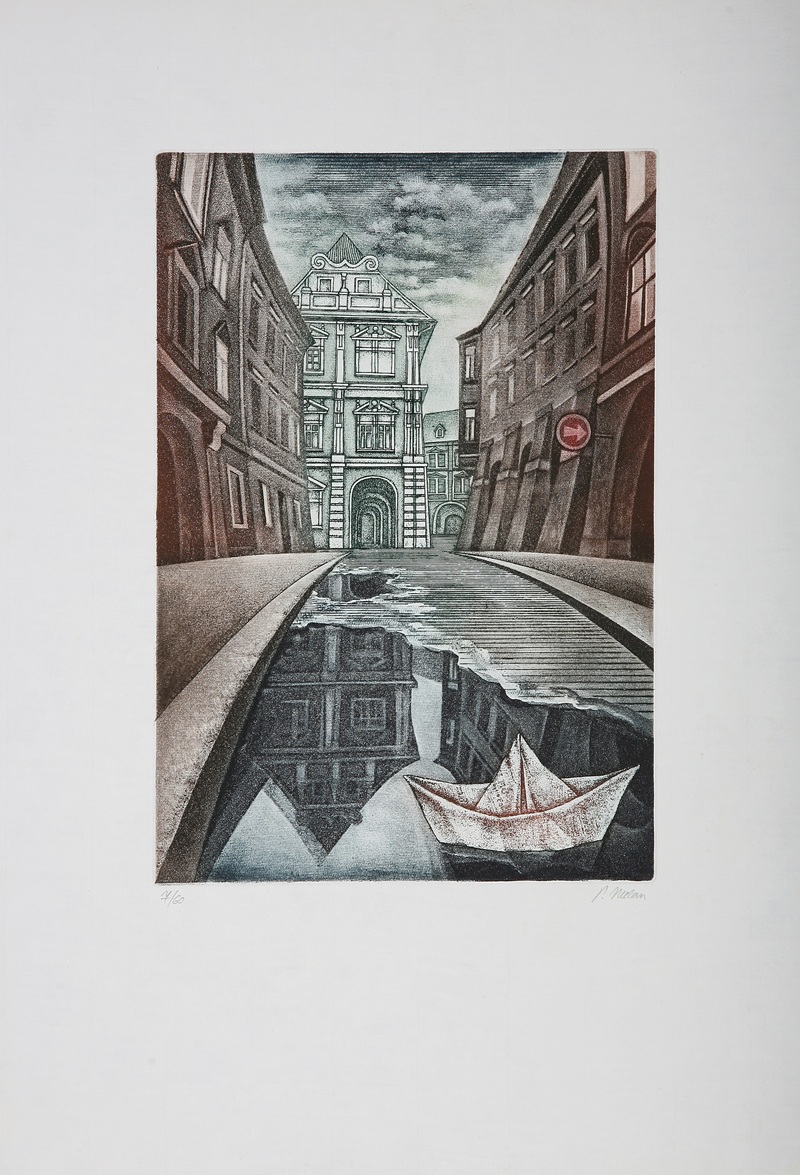
Petr Melan (1947-2009), who was born in Prague and died there, was a virtuoso artist who created outstanding works for letterpress printing. He worked with the techniques of etching, aquatint and mezzotint, in which he also created unique, precise subjects of Prague. Playful, yet a little melancholic and surrealistic, he presents a small piece of Prague in the Lesser Town district of Prague after a heavy downpour.
Prague - A City Full of Cultural Diversity and Artistic Inspiration
Prague's history is therefore rich in cultural and artistic achievements. From its role as the imperial seat and centre of the Bohemian School of painting to its importance as a home in exile for ostracised artists. Prague's historical sites, famous collections and renowned educational institutions have made the city an indispensable centre of European art and culture. As a result, the city exerted a special attraction on artists in the 20th century.
The cultural axis between Prague and Paris shows how deep the connections and mutual influence of European art metropolises run. Artists such as Václav Brožík, Alfons Mucha and Toyen shaped the art scene in both cities and left a lasting legacy. Even during the dark times of National Socialism and Communism, Prague remained a haven of creative freedom and a symbol of tireless cultural exchange.
Today, Prague is not only known for its historical and architectural beauty, but also for its vibrant art scene. The works of Jaroslav Grus, František Emler, Ivan Sedliský and Petr Melan are just a few examples of how the city has inspired and continues to inspire artists. The picturesque views created by these artists capture the unique charm and timeless beauty of Prague.
Prague will continue to be a place that attracts and inspires artists from all over the world. The ‘Golden City’ remains a living testament to its rich cultural past and its continued importance in the global artistic landscape.
On art24 you can find many other works by Czech artists who gave European art a wide range of impulses in landscape and nature painting, in portraits or human and animal images as well as in abstract, surreal, naive or fantastic works - for example:
Jarmila Chytilová Svojanovská auf art24
Jitka Walterová auf art24 auf art24
Further reading:
Prager Kunstszene, Pt. 2: Art District 7 – ostraum
Achse Prag-Paris: Poetismus und französische Avantgarde - GRIN
